
The 40 best California outdoor experiences. Period.
- Share via
This is the California we’ve been pining for — 40 summer destinations that call to us loudly in good times and bad.
To build this list, I thought about the places I was most eager to see, hear, feel, smell and taste again after decades of traveling the state and 14 months of staying home. There are no deserts here, because we’re talking about summer. And no theme parks, because they get enough attention. But what epic, irresistible wonders there are! I’ve road-tested them all, except for one spot 14,505 feet above sea level. (Fortunately, my colleague Mary Forgione, of “The 50 Best Hikes in L.A.,” has that summit covered.)
If you’re getting to know California, these 40 are great places to begin. But we’ve tried to make this list more than a starter kit. Even if you’re an old hand, there will be destinations that you’ve missed, and I’ve added a pro tip to every destination.
Has the pandemic changed these places? Yes. Scores of restaurants and other businesses are gone. Among those remaining, there are smaller staffs, more patio seats, shorter hours and tighter crowd limits. All those circumstances are evolving, so check websites.
If you have a nomination for this collection, send it to @mrcsreynolds (Twitter or Instagram), christopher.reynolds@latimes.com or tell us here. Like us in the face of adversity, this list needs to grow and change.
Now let’s get back on the road.
Alcatraz

Pro tip: It doesn’t get massive crowds, but nearby Angel Island State Park (served Fridays-Sundays by the Blue & Gold ferry at Pier 41) is a key landmark in Asian American history. Today, many visit just to hike or ride bikes. But from 1910-40, this was the U.S. entry point for about 175,000 Chinese immigrants, who typically spent weeks or months locked up on Angel Island. Some etched poetry on walls in the Immigration Station and barracks, a 1.5-mile walk from the ferry landing. (As of late May, the interiors were still closed as a pandemic safety measure.)
American River by raft

Pro tip: Marshall Gold Discovery State Historic Park, where the Gold Rush began, is a less than a mile from many of Coloma’s river outfitters along California 49. Placerville, handy to the river, is a pleasant town for a stroll and meal.
Balboa Park

Now consider that the zoo is less than 10% of Balboa Park, which covers 1,200 acres. The park is also home to 17 museums featuring art, photography, natural history, science, flight, history, model railroading and more, with a new Comic-Con Museum (still gradually opening). The Old Globe theater complex includes three venues. Flop on the lawn by the big lily pond by the Botanical Building. Try lunch at the Prado restaurant, where the patio seats are best whether we’re in a pandemic or not.
Pro tip: Even if you’ve never had a train set, the San Diego Model Railroad Museum will knock you out.
Nepenthe, Big Sur
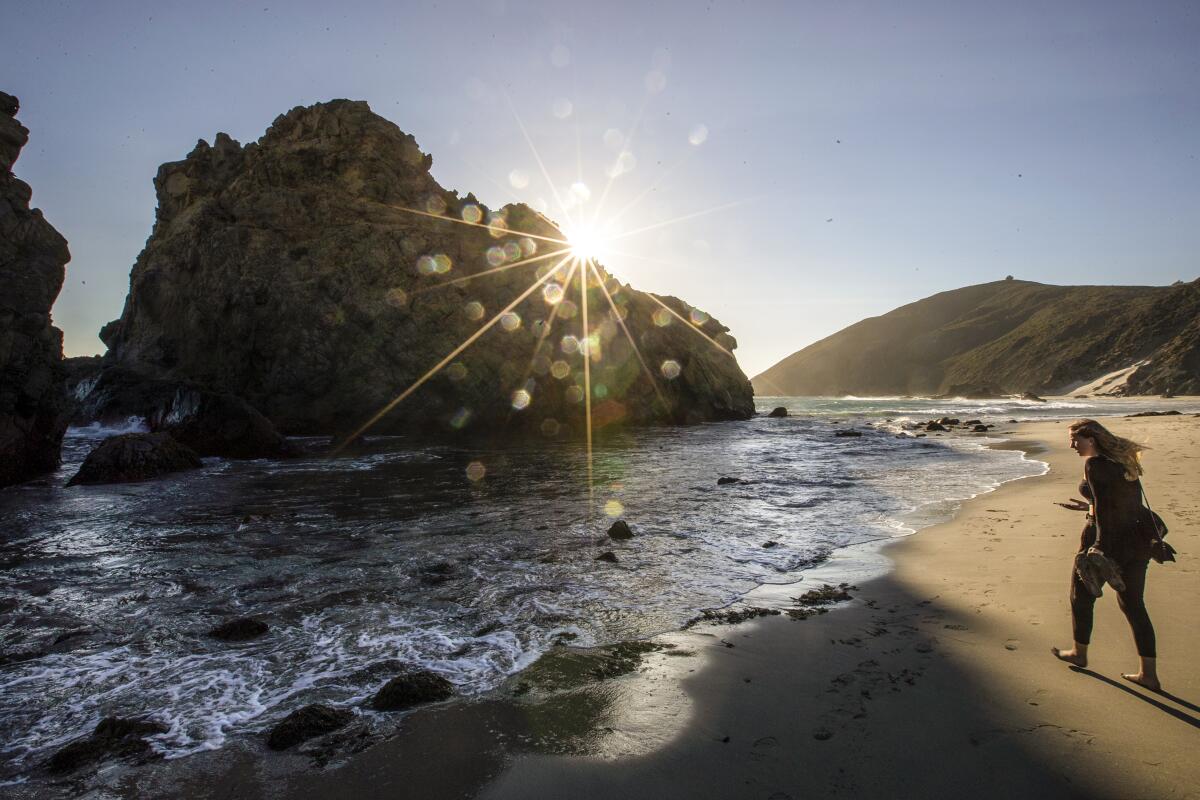
Pro tip: Be warned that mudslides (and sometimes fires) often force California 1 to close, so check its status on the Caltrans website.
Burney Falls
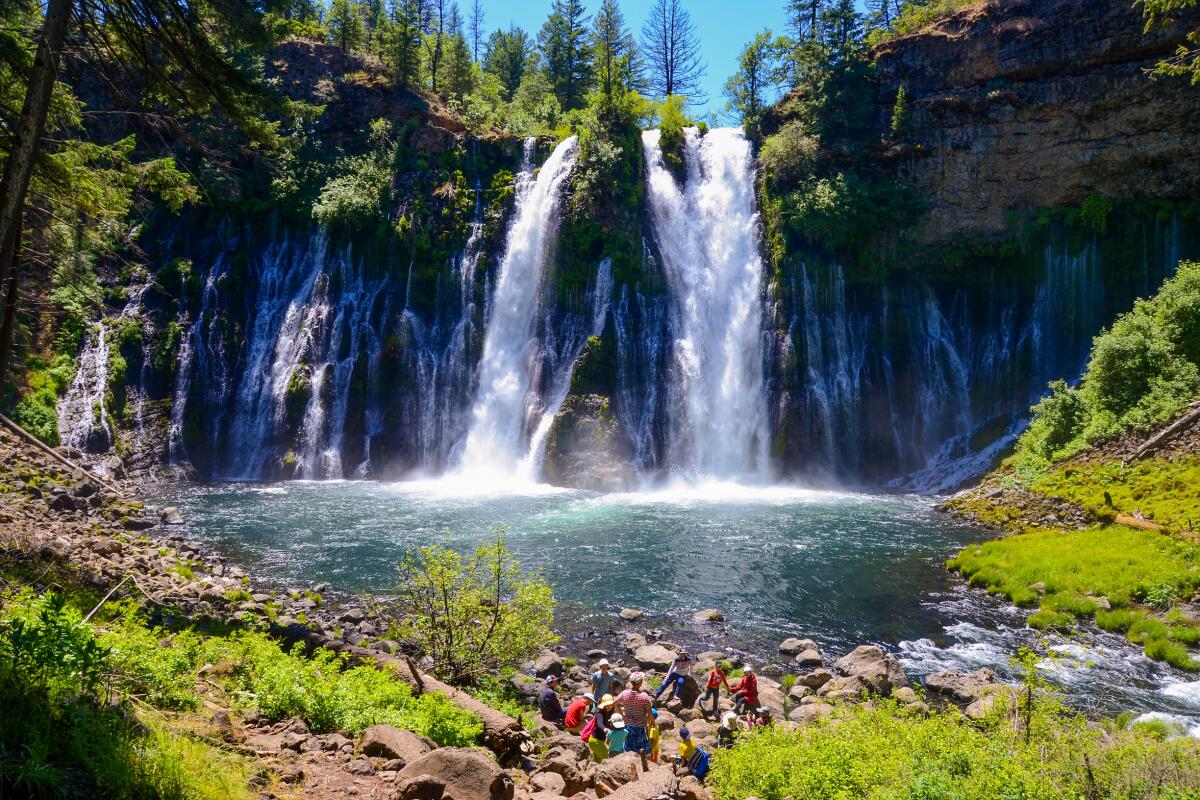
Pro tip: Locals will tell you there’s a fifth waterfall within reach: Lion Slide Falls, also known as Hatchet Creek Falls, is closer to Redding than the others.
Carpinteria

That would be Carpinteria City Beach, which runs north from the foot of Linden Avenue, and Carpinteria State Beach, which runs south for a mile and features campgrounds that book up fast. Linden Avenue is lined with an unfussy collection of surf shops, antiques stores and eateries, including the Spot, a rustic burger stand, and Esau’s Cafe, which is all about breakfast, lunch and surfing. Rincon Beach Park, one of the state’s top surf spots, is three miles southeast of town.
Pro tip: If you take a long walk on the beach, you might find tar between your toes. That’s probably natural seepage from Santa Barbara’s offshore crude oil deposits. A little olive oil can help you clean up.
Escape to a picturesque island just one hour away

Pro tip: There are hiking and camping near Two Harbors and beyond, including a 38.5-mile, four-day adventure known as a Trans-Catalina Trail. Begin in Avalon, end at Two Harbors. And beware of bison.
Chandelier Tree

Then go deeper. About 75 miles farther north on U.S. 101, near Garberville, you’ll reach the 31-mile-long Avenue of the Giants. At Humboldt Redwoods State Park, stop to inspect the magnificent corpse of the Dyerville Giant, once thought to be the world’s tallest tree at 370 feet. Hooked on redwoods? Then press on, about 135 miles farther north, to Redwood National and State Parks, crowded with countless specimens.
Pro tip: Tuck in your mirrors.
Chicano Park

Then in 1970, when the California Highway Patrol started building an office where a park was expected, the largely Mexican American neighborhood rose up and at last got a 7-acre park built. Soon after came the first murals. Now there are 49 murals, some celebrating Mexican icons Pancho Villa and Frida Kahlo. Within two blocks, you can get flautas at Las 4 Milpas or tacos at Salud! In 2017, federal officials added the park to the National Register of Historic Places, crediting artists Salvador Torres, Mario Torero, Victor Ochoa and others.
Pro tip: If you’ve never driven across the bridge, do it. Then bear left on Orange Avenue and within a mile you’ll reach the Hotel del Coronado, a red-roofed, beachfront 1888 Victorian resort that served as a setting for the films “Some Like it Hot” (1959) and “The Stunt Man” (1980).
Cold Spring Tavern

Cold Spring Tavern is tucked along the roadside on San Marcos Pass above Santa Barbara, where it has been uniting bikers and dressed-down upper-crusters for decades.
A stage stop in the 1880s and owned by the same family since the 1940s, the Cold Spring and its four fireplaces are half an hour’s drive from Santa Barbara. The fanciest part of the property is its dimly lighted restaurant interior, where bison and venison are specialties. The rustic tavern serves indoors and out, and for generations has been known for its acoustic blues and tri-tip on weekends. (Also cheap chili during happy hour.)
Pro tip: Management says live music, outdoor barbecuing and full service will soon resume at the tavern’s Log Cabin Bar. For now, reservations are recommended, especially for Saturday or Sunday, but more than half of the tables are set aside for walk-up customers.
Columbia State Historic Park

Pro tip: The Gold Rush began at Sutter’s Mill in Coloma, about 80 miles north of Columbia. Coloma has Marshall Gold Discovery State Park, but Columbia has more surviving buildings and more to see and do.
Crystal Pier

The pier stands in San Diego’s Pacific Beach, where surfing, bar-crawling and restaurant-hopping happens, but you’ll find plenty of happy families at play too. The Cape Cod-style units have white walls, wood floors, ceiling fans and often kitchenettes. Summer rates are $225 to $600 a night, with a three-night minimum.
But you don’t have to spend the night. The pier is open to the public for strolling and fishing (no permit needed), and there’s a bait and tackle shop.
Pro tip: The pier juts out from the Mission Beach-Pacific Beach Boardwalk, a three-mile promenade (concrete, not wood) that’s edgier than Manhattan Beach’s Strand, milder than Venice’s Ocean Front Walk.
Downtown SLO Farmers Market
Pro tip: Admire downtown’s Bubblegum Alley (it’s just what it sounds like) or take a hike among the experimental architecture projects in Poly Canyon, just north of the Cal Poly campus.
Glass Beach
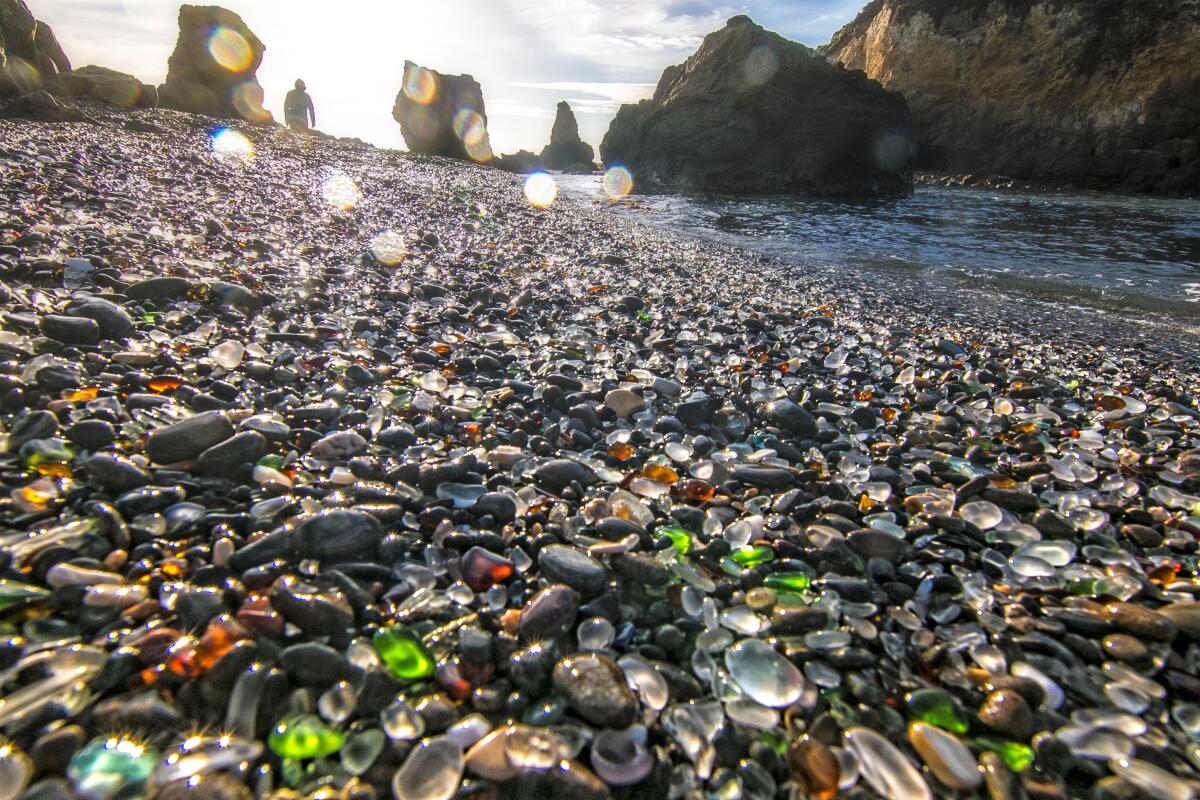
Pro tip: The International Sea Glass Museum is a stone’s skip away from Glass Beach at 303 N. Main St., Suite F, Fort Bragg.
Golden Gate Park

It’s hard to imagine this green expanse as sand dunes, but so it was when park construction began in the 1870s. Look closely at many rocks and you’ll realize they’re colored concrete, placed at the direction of pioneering park superintendent John McLaren, who also devised fake lakes and fake waterfalls.
Pro tip: Atop the De Young Museum‘s bold, angular building, you’ll find a 140-foot-high observation tower with glass walls and staggering wraparound views. It’s free.
Griffith Observatory

Since 1935, Angelenos have embraced Griffith Observatory as “the hood ornament of Los Angeles,” in the words of observatory director E.C. Krupp. It’s the architectural star of 4,210-acre Griffith Park, with three green copper domes, prime views of the Hollywood sign and a bust of James Dean, who sulked here in the 1955 film “Rebel Without a Cause.” Parking is tough, so you might want to hike up from the Greek Theatre or Fern Dell or see about Dash shuttle bus service.
If the state sticks with plans to ease restrictions June 15, Krupp said the observatory should be able to reopen “well before the end of summer.”
Pro tip: Hike from the observatory to the Tom LaBonge Panorama atop Mt. Hollywood, a roughly 2.6-mile journey with big views of the Hollywood Hills and San Fernando Valley. And be sure to read up on the felon and philanthropist — felon-thropist? — who made this all possible, Griffith J. Griffith.
Hollywood Bowl

Pro tip: Yes, you’re allowed to bring your own food and drink for many shows, but alcohol is forbidden at some. Read up in advance.
La Brea Tar Pits
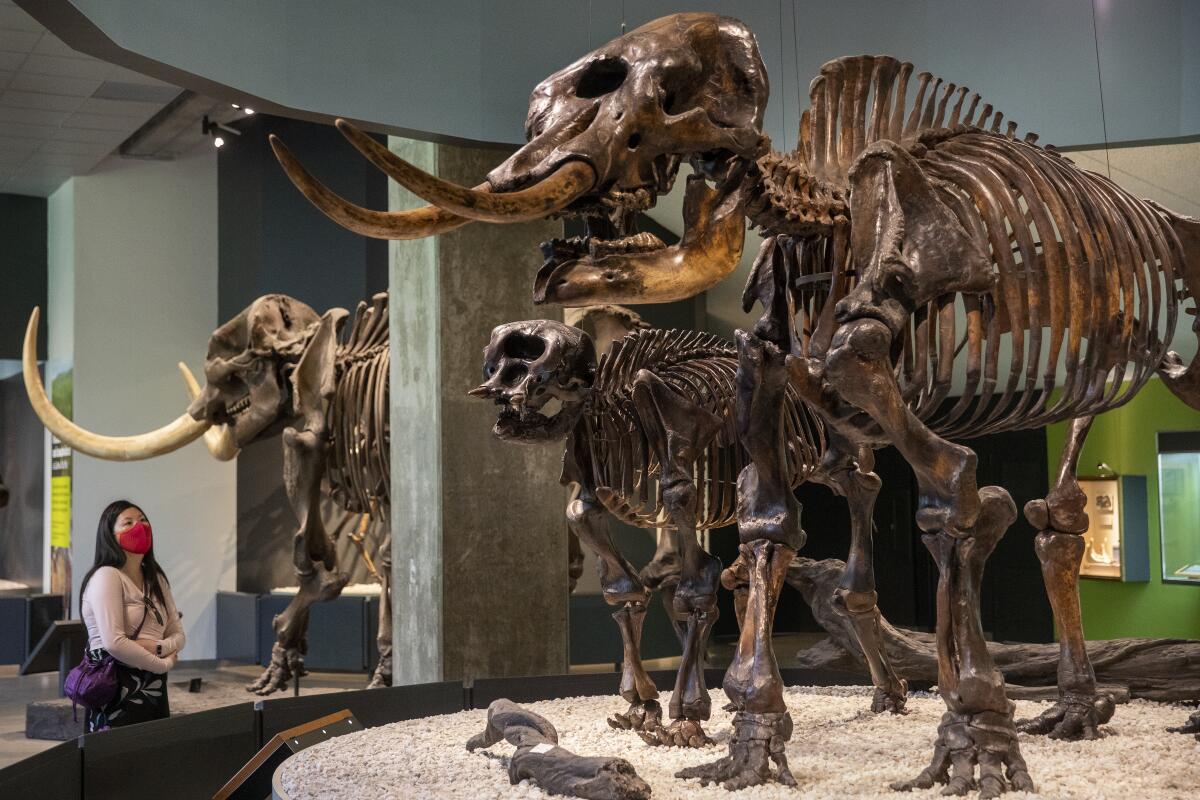
Pro tip: As long as you’re thinking about where fossil fuels come from, consider a trip down the street to the Petersen Automotive Museum, whose vast collection extravagantly documents the role of cars in local and global history.
Lake Tahoe

Pro tip: The paddle-wheeler the M.S. Dixie II, which offers daily scenic cruises including Emerald Bay, is based in Zephyr Bay on the lake’s Nevada side.
Lassen Volcanic National Park
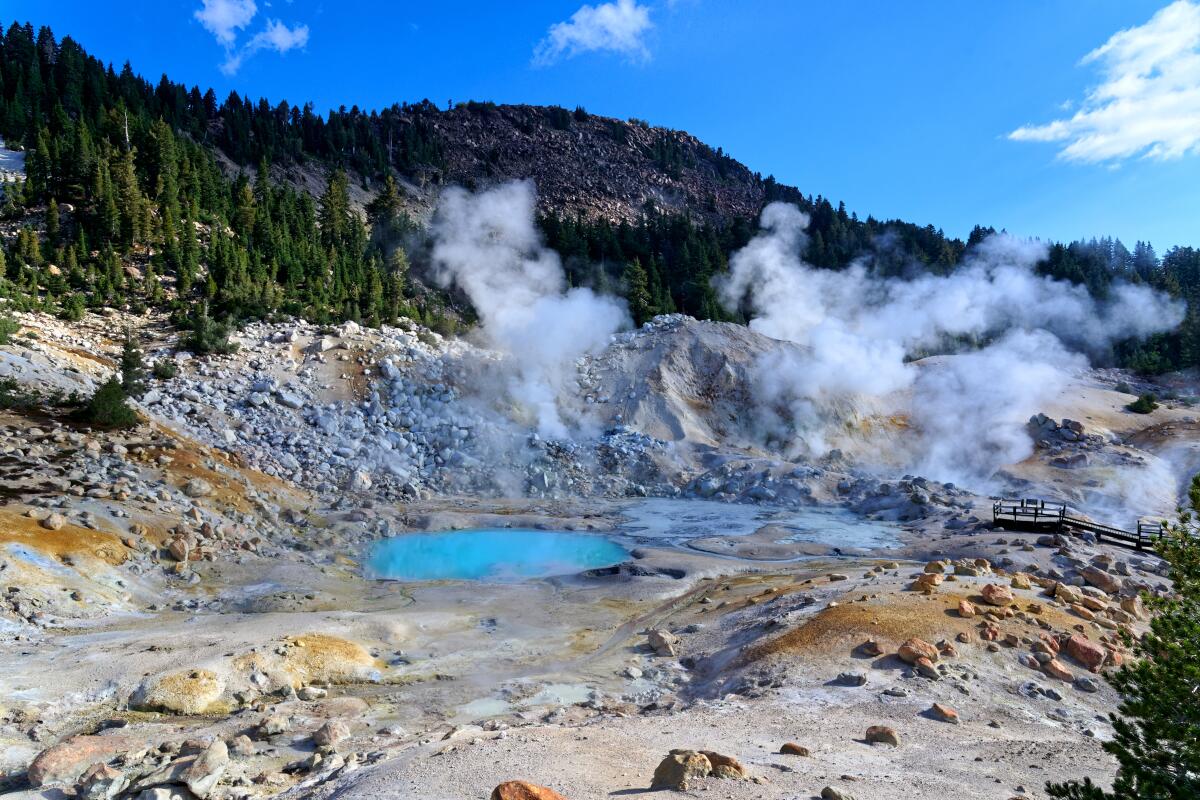
Pro tip: Drakesbad Guest Ranch, open June 11 through Oct. 11, 2021, in the southeast corner of the park, is an endearing throwback with 19 units in a century-old lodge and surrounding cabins. Rooms for two start at $394, meals included.
Stroll, dine or fish on the Malibu Pier

With no Ferris wheel or thrill rides and a 9 p.m. closing time, Malibu Pier, built in 1905, offers sea views, skatewear, souvenirs, rental fishing rods and upscale dining.
Malibu Farm Restaurant sits at the base of the pier with a dining room, patio and table service ( 11 a.m. to 8 p.m. weekdays, 9 a.m. to 8 p.m. weekends). At the ocean end of the pier, the more casual Malibu Farm Cafe (order at the counter) opens at 9 a.m. weekdays, 8 a.m. on weekends, serving breakfast and lunch most days, staying open until 6 p.m. on Fridays, Saturdays and Sundays.
BTW: You can fish here without a permit. In summer, in theory, you might catch halibut, thresher shark, bat rays, corbina or mackerel.
Mammoth Mountain

Pro tip: To break up the 300-mile L.A.-Mammoth drive, detour into the rugged Alabama Hills near Lone Pine, where dozens of movies and TV shows have been filmed, including the first “Lone Ranger” film in 1938. Check out Lone Pine’s Museum of Western Film History. Farther up the road you’ll hit Bishop, the best place for a bite or overnight on the way to Mammoth.
The Marshall Store

Pro tip: Beneath long, narrow Tomales Bay lies a bit of the 800-mile-long San Andreas Fault, the great quake risk that runs from the Salton Sea to Mendocino County. Walk the nearby Point Reyes National Seashore‘s 0.6-mile Earthquake Trail, which starts near the Bear Valley Visitor Center.
Monterey Bay

You can glide along 17-Mile Drive and past the park in a car or astride a rental bike from Adventures by the Sea on Cannery Row in Monterey (which also rents kayaks). Begin at the recently reopened Monterey Bay Aquarium, then proceed along Ocean View Boulevard and Sunset Drive from Cannery Row to Pebble Beach.
The 17-Mile Drive includes the Lone Cypress (the symbol of the Pebble Beach resort area for decades) and brilliant scenery. The drawback? It’s a private road, so you must pay to drive it ($10.75 as of April 2021). But wait. Pebble Beach management allows bicyclists at no cost. So if you’ve got a bike, it’s yours to conquer.
Pro tip: Hungry? The Pebble Beach Market has sandwiches for a fraction of what the resort restaurants charge.
Morro Rock

Pro tip: Morro Rock usually is a dark landmark in a sunny landscape. But not at sunrise. Get to the water’s edge early and you’ll see it handsomely lighted from the east, the surrounding waters shaded.
Mt. Tamalpais State Park

Pro tip: If you hike or ride Dias Ridge, you’ll end at Muir Beach by the Pelican Inn, a facsimile of a 16th century English pub with seven guest rooms and a menu full of beers, ales and hearty British dishes.
Mt. Whitney

Pro tip: You don’t have to go all the way. Instead, do a day hike (no permit required) from Whitney Portal to Lone Pine Lake and back, a 6½-mile round trip that includes about 1,900 feet of elevation gain and often stiff winds.
Napa Valley Wine Train
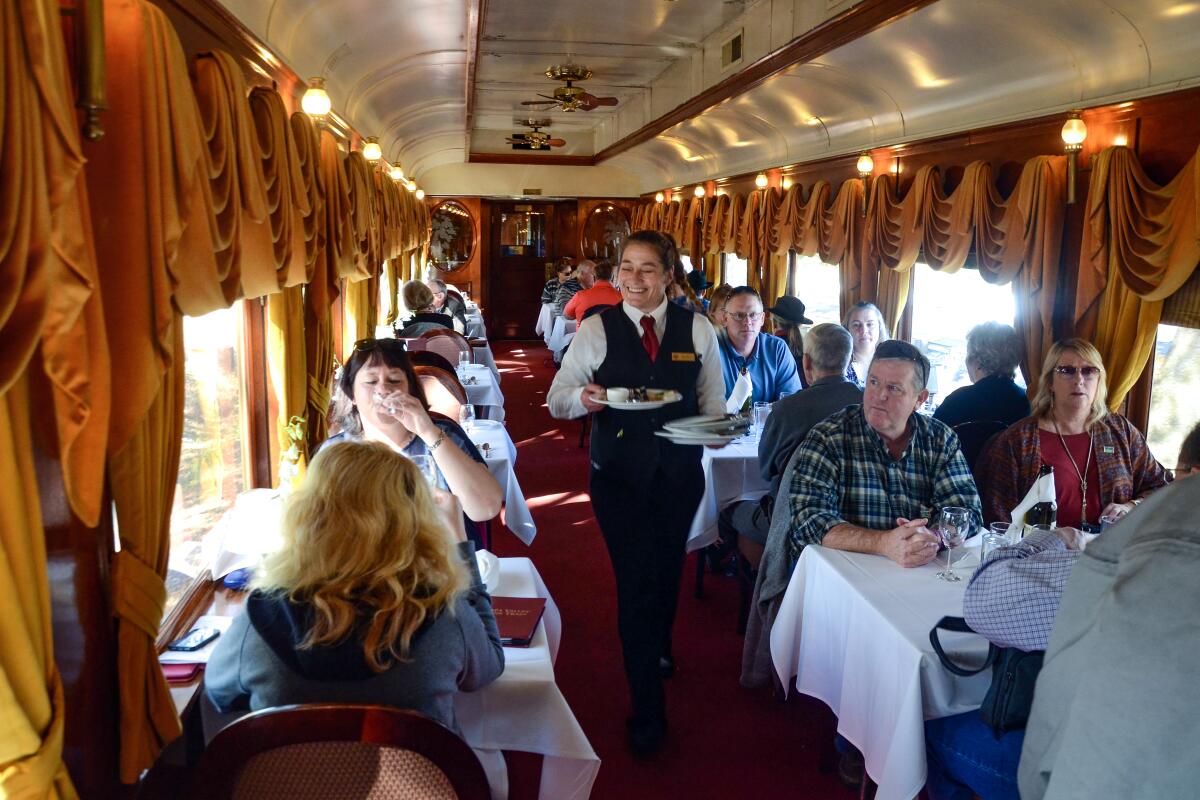
Pro tip: For a good taste of what people grow in the Napa Valley besides grapes, stop by the Oxbow Public Market. If history rings your bell, the oldest winery in the valley is Charles Krug in St. Helena, founded in 1861 and owned by the Mondavi family since the 1940s. For the summer of ’21, most tastings are being done outdoors, beginning at $45.
Pageant of the Masters, Laguna Beach
The Pageant of the Masters has its roots in 1932, when area artists were looking for a spectacle to lure Olympics visitors from Los Angeles. It has evolved into a strangely potent, family-friendly night of entertainment in a 2,600-seat amphitheater. (The ritual has been lampooned on “Gilmore Girls” and “Arrested Development.”)
Because the area’s living painters need to eat too, there’s a juried Festival of Arts Fine Art Show. The 2021 pageant, which runs July 7-Sept. 3, has a “Made in America” theme.
Pro tip: Parking in Laguna Beach is difficult, and the pageant has no dedicated adjacent lot, but there is an app. Expect to do some walking or waiting for a shuttle.
Point Lobos State Natural Reserve

It used to be a working shoreline. Soon after the Gold Rush, Chinese immigrants arrived to fish. Later came whalers, Japanese, and Portuguese fishermen, and an abalone cannery. Since 1933, the state has owned it. Take the 1.4-mile North Shore Trail between Whalers Cove and Sea Lion Point and keep an eye out for Old Veteran, a grizzled Monterey cypress that clings to a cliff top. At Weston Beach, remember acclaimed photographer Edward Weston, who made images here from the late 1920s to the late 1940s and whose ashes were scattered here in 1958. Admission is $10 per car; the 150 parking spaces often fill up, inspiring the frugal and the tardy to park along the shoulder of the highway.
Pro tip: “Come in the winter when it’s stormy and no one’s out here,” Edward Weston’s grandson, photographer Kim Weston, told me a few years ago. “It’s an amazing piece of land.”
Santa Cruz Island

What if a chunk of California broke off the coast of Santa Barbara and floated off before anyone had time to erect a Taco Bell on it? You’d get something like Santa Cruz Island, the largest, most popular chunk of Channel Islands National Park, which is mostly empty.
It’s an hour’s boat ride from Ventura Harbor. You can hike and camp (one campground, 31 sites), kayak in sea caves or imagine when the island was a working ranch. Nowadays, the park service controls about a quarter of it, including Scorpion Anchorage, where concessionaire Island Packers drops most visitors. The other three-quarters of Santa Cruz are owned by the Nature Conservancy, which scorns visitors. If you camp, keep an eye out for island foxes: The once-embattled population is now so numerous and bold that one or more are likely to take a run at your picnic table. Lock up your food.
Pro tip: If tiny islands, shrieking seabirds or far-flung lighthouses quicken your pulse, you might need a day trip to Anacapa, about five miles west of Santa Cruz. Island Packers boats go there too.
Santa Monica Farmers Market

As many as 75 farmers set up stalls along Arizona Avenue between 4th Street and Ocean Avenue (until pandemic restrictions are lifted, capacity is reduced). If you’re arriving by car, you’ll have to cope with nasty traffic and parking. But once you’re afoot, life is good. Peaches from Hanford. Olives from Tulare. Leeks from San Luis Obispo. Here and there, banjo players and guitarists.
Pro tip: Can’t do Wednesday? The same organizers do Saturday markets on Arizona Street and Virginia Avenue Park and a Sunday market on Main Street.
Sensorio, Paso Robles

The glow-in-the dark artwork by Bruce Munro began in May 2019 with “Field of Light,” a 15-acre walk-through installation illuminated by 58,000 stemmed spheres with optic fibers inside. Munro has added “Light Towers,” 69 colored towers made of more than 17,000 wine bottles. Their colors change to music. It will be open Thursdays-Saturdays through May 31, then Thursdays-Sundays through Sept. 30. Tickets from $30.
Dinner? Sensorio has a kitchen, and Ricky’s Tacos food truck is usually handy.
Pro tip: Between forays to the scores of tasting rooms of greater Paso Robles, take a walk around grassy Downtown City Park, a green space surrounded by many restaurants and a pleasant small-town atmosphere.
Steamer Lane, Santa Cruz

Just looking down at one of the state’s best-loved surf spots is enough to bring you closer to the cool, damp soul of Santa Cruz, which glistens with the tracks of innumerable banana slugs. The elevation gives you a great angle for photography, and Lighthouse Field State Beach is next door.
Pro tip: You’re already on West Cliff Drive, which is great for a coastal meander. Less than a mile northeast on that route, you’ll find the Santa Cruz Wharf, a landmark full of eateries and frequented by sea lions and pelicans. A few hundred yards beyond the wharf is the Santa Cruz Beach Boardwalk amusement park.
Temecula Valley by balloon

Several balloon companies operate in the area, including: California Dreamin’ and A Grape Escape. Weekend shared group flights start at about $200 per person. On a typical flight, you’ll get up to 2,000 feet high and feel the heat (and hear the roar) of the overhead burners that control the balloon’s altitude.
Pro tip: One ballooning company, Magical Adventure, offers a “mile-high flight” for about $1,250 that is “exactly what you are thinking, naughty one.”
Torrey Pines Gliderport

Sail planes were taking off here as early as the 1920s. In 1930, Charles Lindbergh glided on these winds. Hang gliders joined in the 1970s, then paragliders, then tandem paraglider flights ($175-$255). See the shoreline about 200 feet below? That’s Black’s Beach, accessible by a steep, half-mile trail. (It has a nude zone.)
Pro tip: For more visual stimulation, cross North Torrey Pines Road to explore the outdoor artworks of UCSD’s Stuart Collection and the brutally top-heavy geometry of its Geisel Library.
Trees of Mystery

Inside, you’ll find the Redwood Canopy Trail, a network of eight suspension bridges with stairs and platforms 50 to 100 feet above the forest floor. There’s also a SkyTrail gondola, Forest Experience Trail, Wilderness Trail, the Trail of Tall Trees — all manner of taller and strangely shaped trees, epic wood carvings and good, clean timberland hucksterism. Admission, $20 for adults; $11 for children age 6-12.
Pro tip: If you want to keep the talking-giant illusion intact, don’t look too closely at the back of Paul Bunyan’s right boot.
Venice Beach
Pro tip: The Sidewalk Cafe (at Horizon Avenue) is a prime place along Ocean Front Walk to sit and watch people. The Venice Ale House (at Rose Avenue) is another.
Ferry Building and waterfront

Start at the foot of Market Street in the the Ferry Building. From 1898 until the Bay Bridge and Golden Gate Bridge went up in the 1930s, ferries from Alameda and Marin counties were the heart of Bay Area commuter life. Then cars and BART took over. Now the Ferry Building is crowded with artisan shops and restaurants and a farmers market. Working your you way north and west on the waterfront (by foot, bike or streetcar), you’ll find food and booze at the snug, old Pier 23 Cafe; a tourist-driven shopping scene at Pier 39; and the spectacle that is Fisherman’s Wharf. If you rent a bike at Blazing Saddles, Sports Basement or San Francisco Bike Rentals ($25-$75 daily), you can pedal to Golden Gate views at Crissy Field, the Warming Hut and Fort Point. Or ride across the bridge to Sausalito (1.7 miles) and catch a ferry back.
Pro tip: Dress in many layers (for the wind). Also, keep an eye out for the Bay Bridge light show after dark.
Yosemite National Park

Yosemite Falls, the great spigot of Yosemite Valley, is North America’s tallest waterfall, a 2,425-foot medley of cascades down granite walls. Stand in the mist and be humbled. Or climb the Yosemite Falls Trail to Columbia Rock (two miles round trip). Or try the Mist Trail to the top of Vernal Falls. There won’t be shuttle buses this summer, so explore the valley by bicycle.
But remember, the valley is six square miles in a 1,187-square-mile park. Drive into the high country and catch the panorama from Glacier Point. Take Tioga Road (which usually opens in late May or June) to Olmsted Point, Tuolumne Meadows and Tenaya Lake.
Pro tip: Cars and buses can’t enter Mariposa Grove right now because access was closed after a January wind storm. But you can hike or bike in (four miles, round trip from Mariposa Grove Welcome Plaza). Then you can explore a forest with 15 fallen sequoias.






